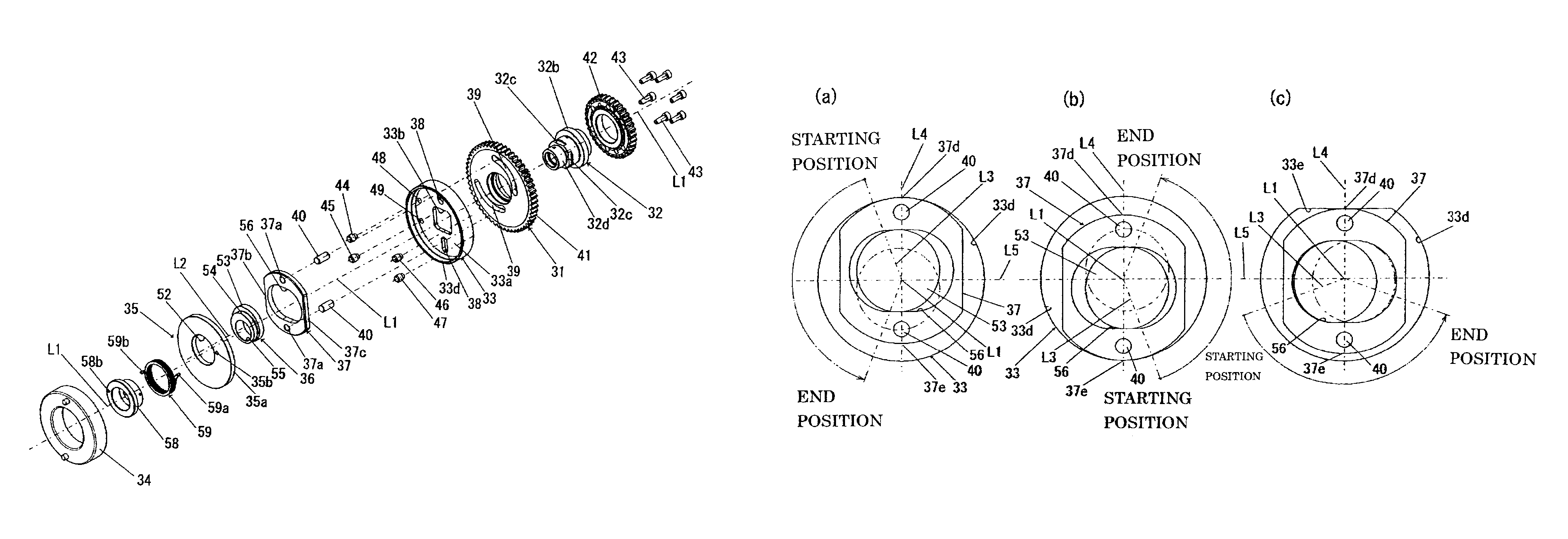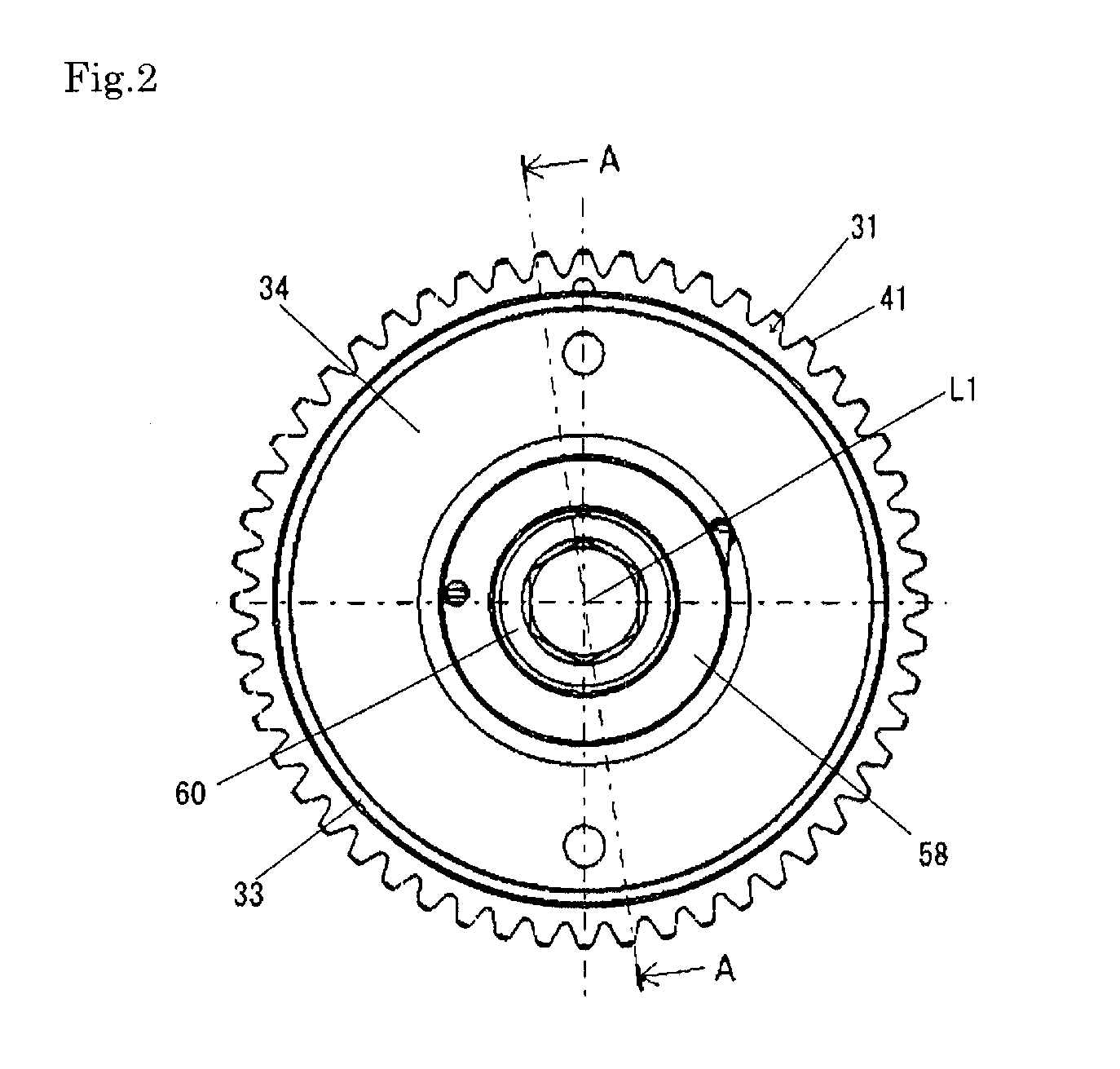Phase variable device in car engine
a technology of phase variable device and car engine, which is applied in the direction of coupling, yielding coupling, valve arrangement, etc., can solve the problems of difficult control of the rolling speed of the spherical body, problematic errors in the timing of intake valve/exhaust valve, etc., and achieve the effect of local frictional force, enhancing force, and second rotational body
- Summary
- Abstract
- Description
- Claims
- Application Information
AI Technical Summary
Benefits of technology
Problems solved by technology
Method used
Image
Examples
second embodiment
[0039]FIGS. 1 through 18 show a first and the phase variable device in accordance with the present invention.
first embodiment
[0040]FIG. 1 is an exploded perspective view of a phase variable device for use with a car engine in accordance with the invention.
[0041]FIG. 2 is a front view of the first phase variable device of FIG. 1.
[0042]FIG. 3 shows an axial cross section of the first phase variable device taken along line A-A of FIG. 2.
[0043]FIG. 4 shows a vertical cross section of a second rotational body and a rotational guide plate (or intermediate rotational body) taken along line B-B of FIG. 3.
[0044]FIG. 6 shows a vertical cross section of a first rotational body taken along line D-D of FIG. 3.
[0045]FIG. 7 is a diagram illustrating a relationship between the second rotational body and a circular eccentric cam.
[0046]FIG. 8 illustrates the circular eccentric cam in operative contact with the cam guide plate.
[0047]FIG. 9 illustrates the first rotational body in operative contact with guide pins (or slide members).
[0048]FIGS. 10(a) through (c) show different specifications of the circular eccentric cam in ...
PUM
 Login to View More
Login to View More Abstract
Description
Claims
Application Information
 Login to View More
Login to View More - R&D
- Intellectual Property
- Life Sciences
- Materials
- Tech Scout
- Unparalleled Data Quality
- Higher Quality Content
- 60% Fewer Hallucinations
Browse by: Latest US Patents, China's latest patents, Technical Efficacy Thesaurus, Application Domain, Technology Topic, Popular Technical Reports.
© 2025 PatSnap. All rights reserved.Legal|Privacy policy|Modern Slavery Act Transparency Statement|Sitemap|About US| Contact US: help@patsnap.com



